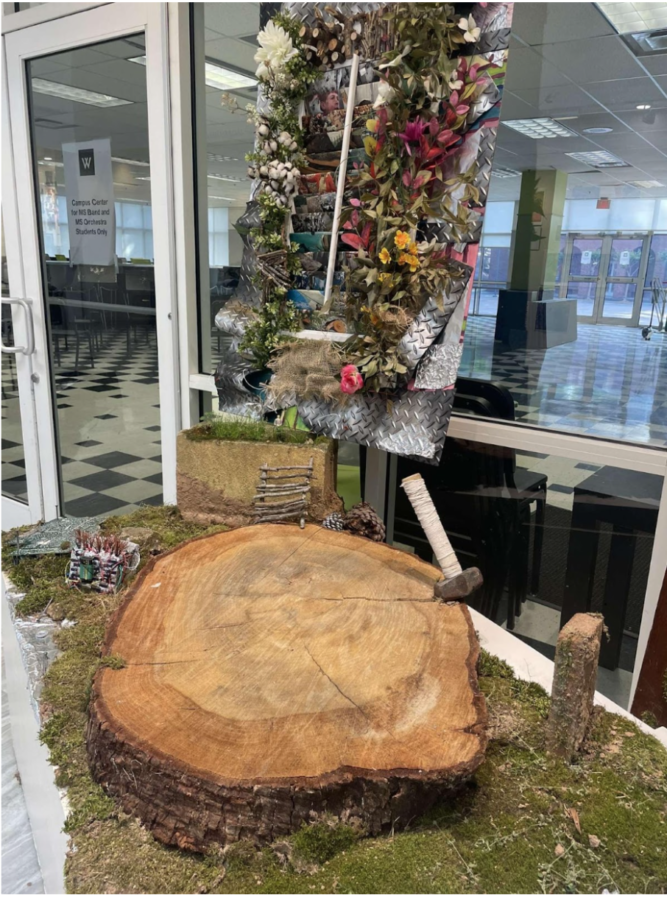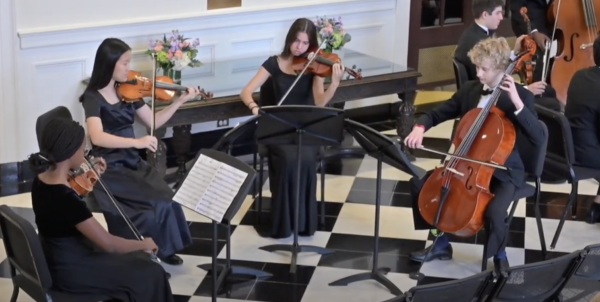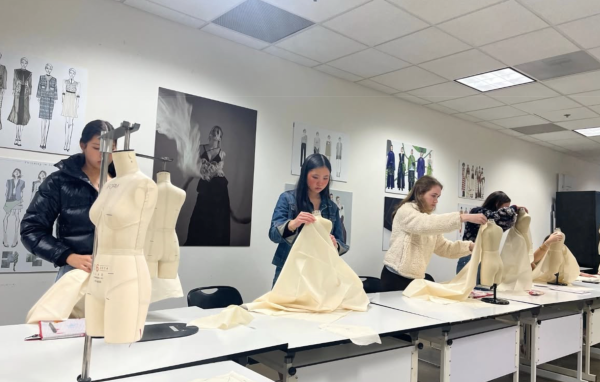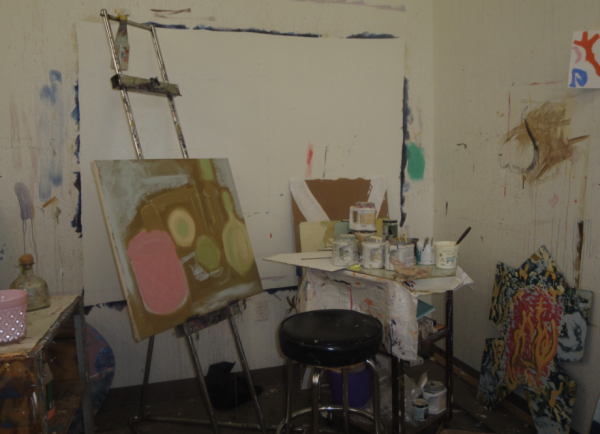Spotlight on AP Art exhibit in Broyles
Photo credit Sydney Watson
Owen O’Neill’s AP Art Project presented at the AP Art Reception at Broyles this weekend!
Every April, the AP Art exhibit in Broyles displays the accumulation of the work created by the AP Art students in the courses of Drawing and Painting, 2D, and 3D Design. After relentless hours on Thursday nights after school from 5pm-8pm for open studios, the AP Art exhibit allows the artists to share their hard work with others and gain additional feedback before they submit their work to CollegeBoard for scoring.
Unlike other art courses offered at Westminster, AP Art requires that all pieces are designed and developed under a specific sustained investigation, which is the central theme of the artist’s inquiry. Starting as far back as the summer, students begin generating sustained investigations for their portfolios and continuously revise their statements throughout the course.
“This is the first time I’ve ever focused on one artist statement and one central theme for an extended period of time, so it’s been a really fun process discovering my strengths and weaknesses in art,” says AP Drawing and Painting student Katherine Andrews.
After precise revisions, Andrews’s art is centered around the nostalgia of childhood imagery and identity through a teenage lens. She conveys her investigation through the use of varied styles of art to juxtapose the “then” and the “now.” Her theme of nostalgia is evident through her depiction of herself during various points of her childhood and her intentional recreation of her childhood art in the background of her pieces.
Similarly, AP 2D Design student Ben Fried also creates art pertaining to the concept of memories. However, instead of the nostalgia of childhood, Fried concentrates on the fleeting nature of human memories and how brief interactions with people in our lives can be stored, changed, and morphed within our minds.
In Fried’s pieces, he digitally manipulates images of people by scanning, warping, or adding collaged elements. Through various unique techniques to distort portraits of people, Fried conveys the temporal nature of memories and their susceptibility to change.
“You don’t have to understand your process from start to end, like from the get-go,” says Fried. “It changes, and it morphs, so in some ways the process is more important than the art itself.”
Like Fried, AP 3D Design student Rogelio Zamudio’s pieces emphasize the importance and significance of the creation process. Zamudio’s sustained investigation explores the juxtaposition between sadness and struggle with death and the beauty of darkness, a concept enhanced by his artistic process.
“I burnt the feathers on my piece to add the charred effects, and the feathers kind of represent animals, humans, and what we leave behind when we die,” says Zamudio.
Zamudio strongly believes that we carry our things after we die instead of being fixated on melancholy. His use of feathers serves as a metaphor for his belief because feathers tend to blow away and are carried elsewhere into the world. Additionally, the use of crosses in Zamudio’s pieces also stems from his beliefs and upbringing.
“I grew up Catholic, so the cross has always been a symbol in my life. I was inspired by the story of St. Peter, and he asked to be crucified upside down, which at the time was the worst form of death.”
The influence of St. Peter’s story can be interpreted through the prevalence of the upside-down hanging crosses in Zamudio’s piece, each of which is charred like the feathers utilized.
While Zamudio finds inspiration for his portfolio in his beliefs, AP 2D Design student Sophie Latz finds inspiration from her observations and the world around her.
“I was inspired by architecture and nature and sort of the juxtaposition and connection between the two, especially finding ways to incorporate both things when oftentimes they are in opposition,” says Latz.
Latz incorporates and layers elements of nature on top of images of architecture. Her meticulous integration of both architecture and nature convey both the contrasting and harmonious existence between the two in our world.
Regardless of medium, all the AP Art students exhibited beautifully executed work, demonstrating their passion and dedication to their craft. With over 50 attendees to the opening night, the exhibit allowed many people to view all the hard work the AP Art students had created.
“I’m excited to be here. [The exhibit] is an exciting culmination of all the hard work we’ve done behind the scenes, and it’s, for the first time, shedding light on our efforts,” says AP Drawing and Painting student Alexis McDonald.
In addition to the attendees, the AP Art exhibit is also the first time that many AP Art students have seen the work of the other disciplines. AP Drawing and Painting, 2D, and 3D design all meet during different periods and rooms because they are separate courses, so students haven’t really seen any pieces outside their own course until now.
“I especially enjoyed Jaq’s composition. I love her drawing style and how she interprets realism in her own way,” says McDonald. “I can’t wait to see what everyone creates in the future.”
The AP Art exhibit showcased the talent, hard-work, and dedication of the students who put their all into expressing their creativity, and it was enjoyable for all.
Edited by Evvie Morgan




